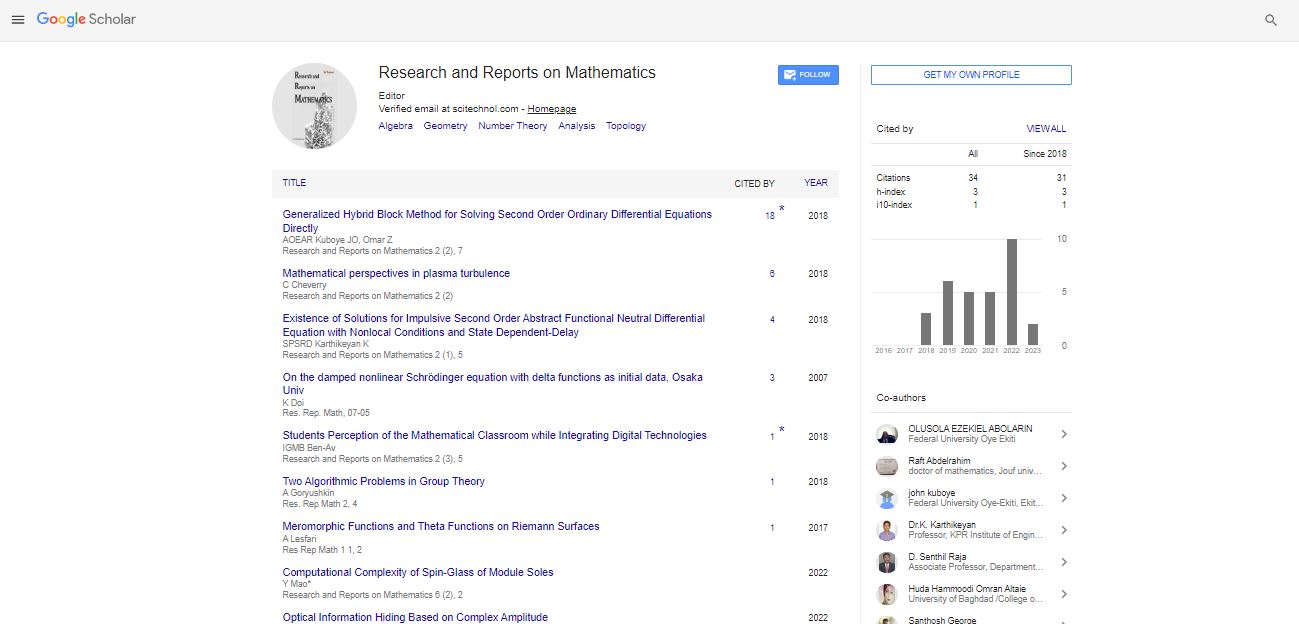Opinion Article, Met Mater Int Vol: 8 Issue: 1
Merging Metal and Technology: The Rise of Additive Manufacturing
Chunyang Wang*
1Department of Mechanical Engineering, Beijing Institute of Petrochemical Technology, Beijing, 102617, China
*Corresponding Author: Chunyang Wang,
Department of Mechanical
Engineering, Beijing Institute of Petrochemical Technology, Beijing, China
E-mail: wangchunyang@bipt.edu.cn
Received date: 24 February, 2024, Manuscript No. RRMT-24-136633;
Editor assigned date: 28 February, 2024, PreQC No. RRMT-24-136633 (PQ);
Reviewed date: 14 March, 2024, QC No. RRMT-24-136633;
Revised date: 21 March, 2024, Manuscript No. RRMT-24-136633 (R);
Published date: 28 March, 2024, DOI: 10.4172/Rrmt.1000195
Citation: Wang C (2024) Merging Metal and Technology: The Rise of Additive Manufacturing. Met Mater Int 8:1.
Description
Additive Manufacturing (AM) has transformed traditional manufacturing processes by enabling the direct fabrication of complex metal components from digital designs. This Study provides an indepth consideration of metals in additive manufacturing, covering the principles of AM processes, materials selection criteria, applications across various industries, advancements, challenges, and future perspectives. Additive Manufacturing (AM), commonly known as 3D printing, has revolutionized the way metal components are produced, offering unparalleled design freedom, rapid prototyping capabilities, and cost-effective manufacturing solutions.
Unlike traditional subtractive methods, which involve cutting away material from a solid block, AM builds objects layer by layer from digital design files. This introduction sets the stage for exploring the transformative impact of metals in additive manufacturing. AM encompasses a variety of processes, including Powder Bed Fusion (PBF), Directed Energy Deposition (DED), binder jetting, and material extrusion. Each process involves layer-by-layer fabrication, starting from a digital model sliced into thin cross-sectional layers. These layers are then sequentially deposited or fused to build the final metal component. Post-processing techniques such as heat treatment and surface finishing may be employed to achieve the desired properties and surface quality.
The success of metal additive manufacturing hinges on selecting suitable materials that meet the required mechanical, thermal, and chemical properties. Metal powders are commonly used feedstock in AM, with various alloys available to fulfil specific application needs. Factors such as powder characteristics, process compatibility, and performance requirements must be carefully considered when selecting materials for metal AM. Selective Laser Melting (SLM) and Electron Beam Melting (EBM) are two prominent PBF techniques used in metal additive manufacturing. SLM utilizes a high-energy laser beam to selectively melt and fuse metal powders, while EBM employs an electron beam in a vacuum environment. Both processes offer precise control over material deposition and enable the fabrication of complex geometries with high accuracy and resolution.
DED processes, such as Laser Metal Deposition (LMD) and Wire Arc Additive Manufacturing (WAAM), involve depositing material layer by layer using a focused energy source. LMD utilizes a laser beam to melt metal wire or powder, while WAAM employs an electric arc to melt metal wire. DED processes are particularly suitable for repairing and adding material to existing components, as well as for fabricating large-scale structures. Metal additive manufacturing finds applications across a wide range of industries, including aerospace, automotive, healthcare, energy, and consumer goods. In aerospace, AM is used to fabricate lightweight structural components, intricate turbine blades, and complex engine parts. In healthcare, patientspecific implants, surgical instruments, and prosthetics are customized using metal AM technologies.
The automotive industry utilizes AM for rapid prototyping, tooling, and manufacturing of customized parts. The versatility and flexibility of metal additive manufacturing enable its adoption in various sectors, offering innovative solutions to design and production challenges. Recent advancements in metal additive manufacturing have focused on multi-material printing, hybrid manufacturing, large-scale AM, and in-situ monitoring and control. Multi-material printing allows the integration of different metals and alloys within the same component, expanding design possibilities and enhancing functionality. Hybrid manufacturing combines AM with traditional machining processes, enabling the fabrication of complex geometries with high precision and efficiency. Large-scale AM initiatives aim to address scalability challenges and broaden the scope of applications for metal additive manufacturing. In-situ monitoring and control systems provide realtime feedback on process parameters, ensuring quality and consistency throughout the manufacturing process.
Conclusion
Despite its numerous advantages, metal additive manufacturing faces challenges related to material quality, post-processing, standards, scalability, and cost-effectiveness. Addressing these challenges requires ongoing research, innovation, and collaboration across academia, industry, and government agencies. Future perspectives for metal additive manufacturing include advancements in materials development, process optimization, standardization, and the integration of AM technologies into existing manufacturing ecosystems. As the technology continues to mature, metal additive manufacturing is poised to play a central role.
 Spanish
Spanish  Chinese
Chinese  Russian
Russian  German
German  French
French  Japanese
Japanese  Portuguese
Portuguese  Hindi
Hindi 